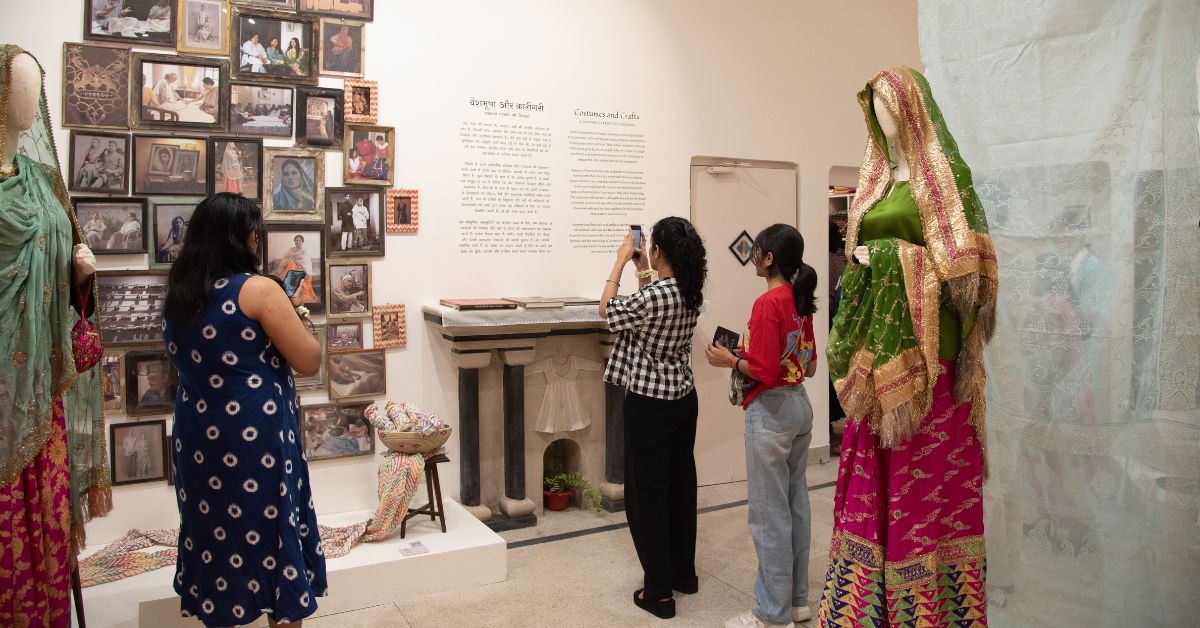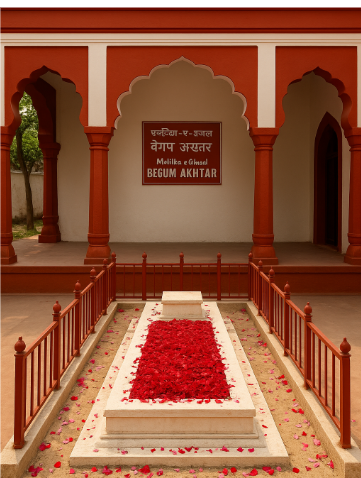In the quiet lanes of old Lucknow, amid the fading grandeur of domes and latticework, a resurrection is underway. At the heart of it lies a simple but powerful idea: that a city’s culture lives not just in its monuments, but in its music, its craft, and the memories of its people.
This idea has taken shape in the form of the Lucknow Bioscope, a dynamic cultural space developed under the banner of the Sanatkada Lucknow Festival. Part archive, part storytelling space, part tribute—it is a living museum devoted to preserving and celebrating the intangible spirit of a city once known as the heart of Awadh.
Restoring a Voice That Never Faded
Few names evoke Lucknow’s soul like Begum Akhtar, the legendary Mallika-e-Ghazal, whose voice once softened the edges of a turbulent time in India’s history. But for decades, the mazaar where she rests had slipped into neglect—until now.
With the support of the Sanatkada team and local artisans, her tomb has been carefully restored. Ivory walls and crimson accents now frame the site, not as a monument to loss, but as a symbol of reverence. It is quiet here, but not still. The air seems to carry her voice—echoes of ghazals that once filled concert halls now drift softly through memory.
“She is more than a singer to Lucknow,” said a local volunteer at the site. “She represents everything we risk forgetting—grace, defiance, and art.”

Crafting a New Kind of Museum
But the Lucknow Bioscope is not only about nostalgia. It is a space of participation—where craft, music, and oral history are not just displayed but lived. The exhibit halls are open-air, the stories interactive, the learning tactile.
One can trace the evolution of Chikankari embroidery, hold artifacts once used by folk performers, or sit in on workshops where children learn to tell stories through shadow puppets. In one corner, a curated audio experience plays old radio interviews and recordings of Lucknow’s poets and musicians.
There are no glass boxes here. No “Do Not Touch” signs. Instead, there is an invitation: touch, listen, remember, and create.
A People’s Project
What makes this revival distinct is its grounding in community. The Bioscope’s programming is shaped not by consultants in metropolitan boardrooms, but by local artisans, historians, and volunteers. Exhibits are constantly evolving. New artifacts are added through public contributions. Children from neighboring schools are invited to create their own interpretations of the city’s past.
The Sanatkada Trust, known for its annual culture and craft festival, has long championed marginalized voices in Lucknow’s artistic community. With the Bioscope, it is stitching together not just lost traditions—but the people who carried them.
“In every needle, every note, there’s a story,” said a spokesperson for Sanatkada. “We’re just giving it space to be heard.”
Reimagining Heritage for the Next Generation
At a time when heritage is often reduced to hashtags or locked behind velvet ropes, the Lucknow Bioscope offers a different model—one that is rooted in accessibility, memory, and collective healing.
It is a reminder that culture cannot be preserved by freezing it in time. It must be reinterpreted, retold, and relived.
And in a city that has long been a cradle of syncretism, grace, and artistic brilliance, this project feels less like a museum and more like a homecoming.


